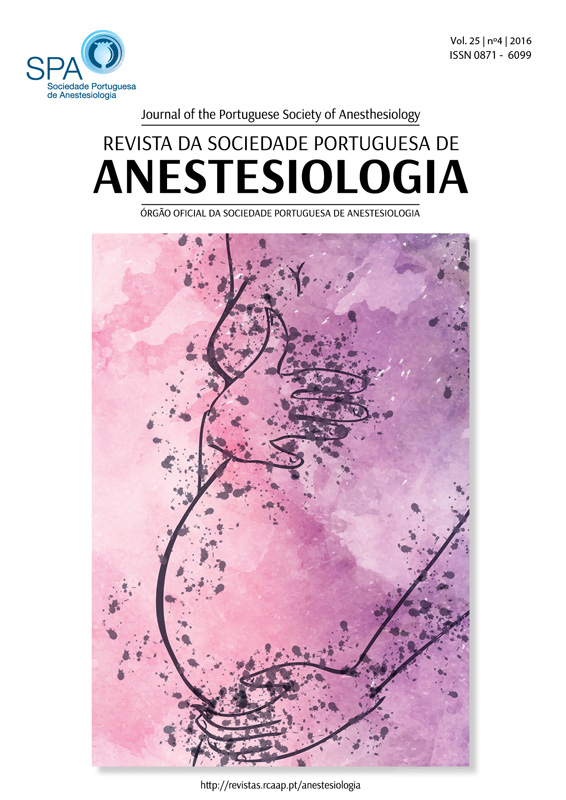Body Mass Index and Post-dural Puncture Headache in the Obstetric Population: is there any link?
DOI:
https://doi.org/10.25751/rspa.8340Keywords:
Analgesia, Epidural, Anesthesia, Obstetrical, Body Mass Index, Post-Dural Puncture Headache, Obesity, PregnancyAbstract
Introdution
Post-dural puncture headache (PDPH) is one of the most common complications of neuraxial blockade. In obese pregnant women, the epidural technique is more difficult to perform, with a higher block failure rate and risk of accidental dural puncture (ADP). The aim of our study was to evaluate the relationship between body mass index (BMI) and the development of PDPH.
Material and Methods
We conducted a retrospective study between January 2007 and December 2014. We reviewed the record sheets of patients who experienced ADP/PDPH. Patients were divided into two groups according to BMI, non-obese (BMI < 30 kg/m2, G<30) and obese (BMI ≥ 30 kg/m2, G ≥ 30). We used SPSS 22.0 for statistical analyses.
Results
There were 58 ADP (0.3%) and 45 (77.6%) women developed PDPH. Comparing G < 30 (n = 35) and G ≥ 30 (n = 23), the incidence of PDPH was similar (80.0% vs 73.9%, p > 0.05). Severe PDPH occurred in 4 (11.4%) women in G < 30 and did not occur in G ≥30 (p > 0.05). Conservative treatment was performed in all patients. The epidural blood patch (EBP) was performed in 42.9% in G < 30 and 17.4% in G ≥ 30 (p = 0.043, OR 3.563; 95% CI 1.00-12.67). After redefinition of groups of women with BMI < 40 kg/m2 and IMC ≥ 40 kg/m2, there was no difference in the incidence and intensity of PDPH, or the need to perform EBP.
Discussion
Low level of evidence suggests that the risk of PDPH decreases as the BMI increases. In our study, the incidence and characteristics of PDPH were similar in obese and non-obese women, but the need for an EBP was lower in obese pregnant women, suggesting that BMI may be protective.
Conclusion
There was no evidence that obese patients are less prone to the development of PDPH. However, obesity was associated with lower need of EBP.
Downloads
Downloads
Published
How to Cite
Issue
Section
License
Articles are freely available to be read, downloaded and shared from the time of publication.
The RSPA reserves the right to commercialize the article as an integral part of the journal (in the preparation of reprints, for example). The author should accompany the submission letter with a declaration of copyright transfer for commercial purposes.
Articles are published under the terms of the Creative Commons Attribution Non-Commercial License (CC BY-NC).
After publication in RSPA, authors are allowed to make their articles available in repositories of their home institutions, as long as they always mention where they were published.


